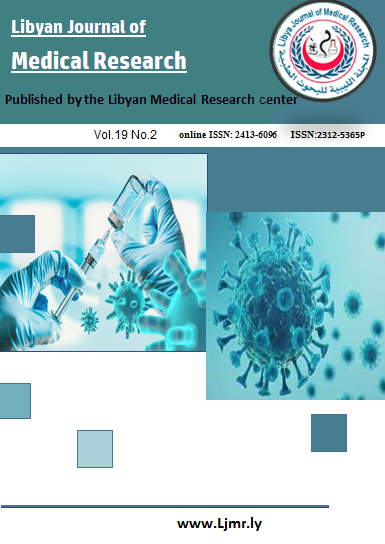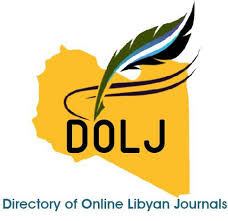International Blood Transfusion Regulations: Considerations, Safety Precautions Discussion, and Preliminary Testing Precedents Before Transfusion: Minireview
DOI:
https://doi.org/10.54361/LJMR.19.2.11Keywords:
Blood transfusions, Discussion, study, Preliminary Testing PrecedentsAbstract
Blood transfusions form a network of integral medical processes for trauma, surgical interventions, and management of chronic diseases all over the world. Nonetheless, different infrastructures in different countries tailor recruitment of donors and policy execution, guaranteeing a safe, sufficient, and equitable blood supply, continue to be challenged. This study examined international blood transfusion policies: donor systems, clinical procedures, safety standards, and pre-transfusion testing guidelines, backed by such key health organizations as AABB and the World Health Organization. Important areas of concern include the incidence of transfusion-transmissible infections (TTIs), the encouragement of voluntary non-remunerated blood donation (VNRBD), the imposition of stringent transfusion practices, and the imposition of laboratory testing before transfusion. Evidence-based suggestions will be put forward towards improving global standards for blood safety and availability using data from PubMed and other reliable sources.
Downloads
References
1. Carson JL, Guyatt G, Heddle NM, et al. Red Blood Cell Transfusion: 2023 AABB International Guidelines. JAMA. 2023.
2. World Health Organization. Blood Safety and Availability. Geneva: WHO; 2025.
3. Alemu M, Tadesse A, Yihun B, et al. Evaluation of Transfusion Transmissible Infections Prevalence. PMC. 2022.
4. International Federation of Red Cross and Red Crescent Societies. Policy Promoting Safe and Sustainable National Blood Systems. Geneva: IFRC; 2011.
5. Jahr JS, Akha AS, Guinn NR. Ways to Enhance Blood Transfusion Safety: A Systematic Review. PMC. 2008.
6. World Health Organization. Blood Safety. Geneva: WHO; 2011.
7. Thalassaemia International Federation. Blood Safety & Availability. Nicosia: TIF; 2024.
8. Arora D, Kumar A, Sharma S. Prevalence of Transfusion Transmissible Infections Among Various Populations. PMC. 2025.
9. Napolitano LM, Kurek S, Luchette FA, et al. Indications for Blood and Blood Product Transfusion. PMC. 2014.
10. Lacroix J, Hébert PC, Hutchison JS, et al. Transfusion Strategies for Patients in Pediatric Intensive Care Units. N Engl J Med. 2007;356(16):1609-19.
11. Hébert PC, Wells G, Blajchman MA, et al. A Multicenter, Randomized, Controlled Clinical Trial of Transfusion Requirements in Critical Care. N Engl J Med. 1999;340(6):409-17.
12. Villanueva C, Colomo A, Bosch A, et al. Transfusion Strategies for Acute Upper Gastrointestinal Bleeding. N Engl J Med. 2013;368(1):11-21.
13. Hajjar LA, Vincent JL, Galas FR, et al. Transfusion Requirements After Cardiac Surgery: The TRACS Randomized Controlled Trial. JAMA. 2010;304(14):1559-67.
14. Salpeter SR, Buckley JS, Chatterjee S. Red Blood Cell Transfusion Policy: A Critical Literature Review. PMC. 2017.
15. Kim Y, Kim HJ, Park KU, et al. Evaluation of Pre-Transfusion Crossmatch Test Using Microscanner. PMC. 2024.
16. European Commission. Summary of the 2022 Annual Reporting of Serious Adverse Reactions and Events in Blood Transfusion. Brussels: EU Health Directorate; 2023.
17. Holcomb JB, Tilley BC, Baraniuk S, et al. Transfusion of Plasma, Platelets, and Red Blood Cells in a 1:1:1 vs a 1:1:2 Ratio and Mortality in Patients With Severe Trauma. JAMA. 2015;313(5):471-82.
18. World Health Organization. Clinical transfusion process and patient safety. WHO/EHT/10.05.
Downloads
Published
Issue
Section
License
Copyright (c) 2025 Amal Ismail Joudeh (Author)

This work is licensed under a Creative Commons Attribution-NonCommercial-NoDerivatives 4.0 International License.
Open Access Policy
Libyan journal of medical Research (LJMR).is an open journal, therefore there are no fees required for downloading any publication from the journal website by authors, readers, and institution.
The journal applies the license of CC BY (a Creative Commons Attribution 4.0 International license). This license allows authors to keep ownership f the copyright of their papers. But this license permits any user to download , print out, extract, reuse, archive, and distribute the article, so long as appropriate credit is given to the authors and the source of the work.
The license ensures that the article will be available as widely as possible and that the article can be included in any scientific archive.
Editorial Policy
The publication of an article in a peer reviewed journal is an essential model for Libyan journal of medical Research (LJMR). It is necessary to agree upon standards of expected ethical behavior for all parties involved in the act of publishing: the author, the journal editorial, the peer reviewer and the publisher.
Any manuscript or substantial parts of it, submitted to the journal must not be under consideration by any other journal. In general, the manuscript should not have already been published in any journal or other citable form, although it may have been deposited on a preprint server. Authors are required to ensure that no material submitted as part of a manuscript infringes existing copyrights, or the rights of a third party.
Authorship Policy
The manuscript authorship should be limited to those who have made a significant contribution and intellectual input to the research submitted to the journal, including design, performance, interpretation of the reported study, and writing the manuscript. All those who have made significant contributions should be listed as co-authors.
Others who have participated in certain substantive aspects of the manuscript but without intellectual input should only be recognized in the acknowledgements section of the manuscript. Also, one of the authors should be selected as the corresponding author to communicate with the journal and approve the final version of the manuscript for publication in the LJMR.
Peer-review Policy
- All the manuscripts submitted to LJMR will be subjected to the double-blinded peer-review process;
- The manuscript will be reviewed by two suitable experts in the respective subject area.
- Reports of all the reviewers will be considered while deciding on acceptance/revision or rejection of a manuscript.
- Editor-In-Chief will make the final decision, based on the reviewer’s comments.
- Editor-In-Chief can ask one or more advisory board members for their suggestions upon a manuscript, before making the final decision.
- Associate editor and review editors provide administrative support to maintain the integrity of the peer-review process.
- In case, authors challenge the editor’s negative decision with suitable arguments, the manuscript can be sent to one more reviewer and the final decision will be made based upon his recommendations.













